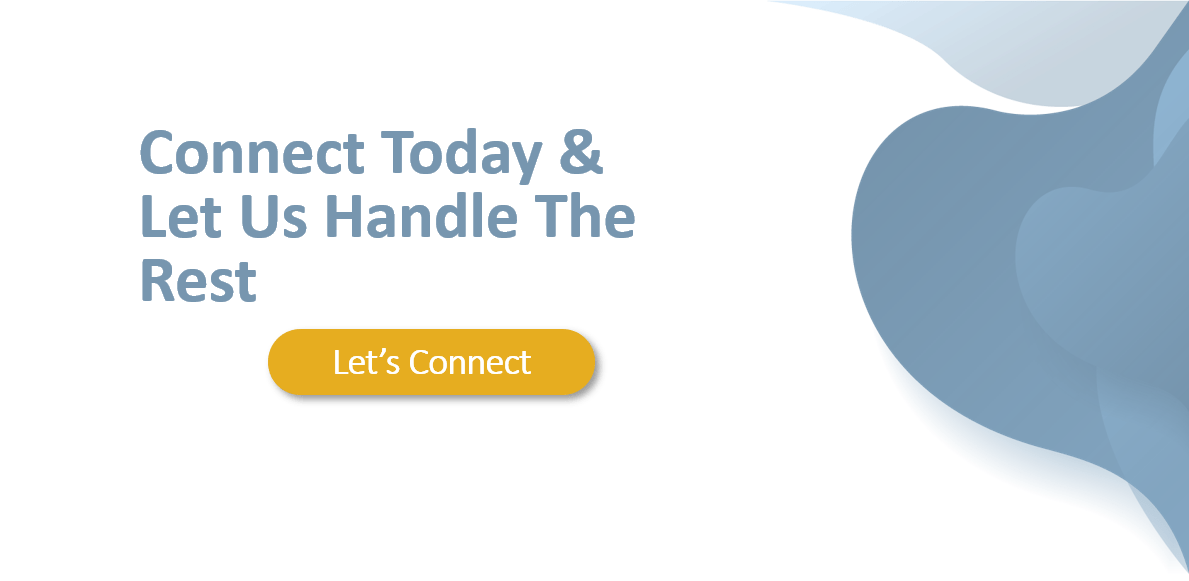Online shopping has become one of the world’s most popular pastimes. The worldwide e-commerce business was worth 1.3 trillion dollars just five years ago. In 2019, it’s approximately three times as valuable. People are increasingly appreciating the convenience of ordering anything from clothes to groceries online. Even a 0.5 per cent difference in conversion rate can mean thousands of dollars in annual revenue for many e-commerce sites.
When it comes to internet buying, today’s customer has a plethora of options. If your website is complicated, unappealing, or employs dark patterns, he will either shop elsewhere or make a purchase but never return to your site. Following six fundamental usability standards in e-commerce can help you improve the user experience. Continue reading if you want to learn more about these regulations!
#1 First and foremost, use categories that are simple to comprehend.
One of the main issues is that users want to find their stuff quickly. It’s especially critical if a visitor is looking for a specific item on your website, such as white sneakers in a store with thousands of options. The first step is usually determining the appropriate category (unless your user navigates using a search bar).
Categories should also be easily accessible from the main navigation, but keep in mind that having too many categories reduces readability, so if this is the case with your store, try creating a few primary categories and then listing the remainder as sub-categories. Both the main category page and a subcategory page should be accessible to the user.
The following are some best practices for building product categories:
- Place a product in each of the categories if it fits into more than one. This makes it easy to locate the object.
- The categories’ names should represent how users think, not how business or technology thinks.
- To avoid overwhelming users with too many options, keep the number of categories to a minimum.
- Divide your categories into main categories and subcategories if you have a lot of them.
- Before going live, test the categories to ensure that the navigation is simple and intuitive.
#2 Support Searches
Search bars are still widely used, particularly in e-commerce, but you should understand why some consumers use them and others browse.
People who utilise the search box are seeking something specific, frequently as detailed as a product name. People who navigate look for additional stuff that is similar to what they are looking for. Users that use the search are frequently in the latter stages of the buying process when they have gathered all of the information they require and have decided which product to purchase.
This is why it’s crucial to think about your website’s search function. The following are some suggestions for ensuring a powerful search feature.
Place a search bar in a prominent location on the website that is accessible from all subpages.
As the user types a query, dynamically suggest results.
Errors in query support
#3 Make Use of Filters
Hundreds of thousands of products can be found at some e-commerce stores. Users find it difficult to explore, thus these businesses employ available filters. Filters should be prominent on the product list and easily accessed. To create them, you must first comprehend how people look for your products. Some filters are more crucial than others; for example, one of the most important parameters for customers is price range.
You must also pick between dynamic sorting and user-selected sorting. When using dynamic sorting, the results alter as soon as the user selects a filter. When using user-command sorting, the user must first confirm his selection before the results are displayed. Both of these strategies are employed on a very regular basis.
The number of products in your e-commerce store
How the backend is designed may be the most important factors in deciding between them.
The results must be sorted practically quickly for the dynamic sorting to operate, which is not always achievable owing to technological constraints.
The most common scenario
Are your users selecting multiple filters at the same time? Or do they normally select only one filter and then select a second filter if necessary? Consider this scenario: you’re hunting for the ideal t-shirt, but you’re only interested in certain colours. If the product list keeps reloading after each colour you select, you’ll be annoyed. However, if you were perusing a hotel rental website and selecting the highest nightly rate, you would probably expect the results to refresh more quickly.
#4 Use the Product List to Display Important Data
In the fashion store idea, the product list and home screen give
Your users might easily experience the paradox of choice at a store with a lot of products: the more options they have to choose from, the more overwhelmed they feel. A product list allows the user to choose which products to look at. You can help people locate what they’re seeking faster by showing information that will aid them in their search.
Usually, but not always, this information is pricing. It could be the size (or sizes available), colour variations, model type, and so forth. Apart from the price, display no more than one or two extra pieces of information, as this will make the list more difficult to skim and the website feel cluttered.
#5 Create product pages that are simple to scan.
The user will usually decide whether or not to buy a product on the product page. As a result, it’s critical to present data that will assist him in making decisions while also not overwhelming him with information.
Only the most important information should be shown at first glance; everything else should be accessible but not obstruct the view. Some people are content to make a purchase based solely on the summary information, while others want to learn everything there is to know about a product before making a purchase. On your website, you must cater to both types.
Few features of a good product page include:
- A collection of high-resolution images of the product is taken from various perspectives (including 360° views in some cases).
- A summary of the product
- Price of the product that can be seen
- Call-to-action button with a strong visual appeal
#6 Having a Distraction-Free Checkout
Your conversion rate can be made or broken during the checkout process. It’s vital to get people through the last steps of the sales process as quickly as possible, therefore it has to be as painless as feasible.
The following are the most prevalent errors:
- Putting the entire checkout procedure on one page
- Overcrowding it with information (like recommended products or ads)
- Providing a simple option for customers to exit the checkout process (such as displaying full navigation)
All of these errors can have a significant influence on the number of abandoned carts.
Breaking down the checkout process into smaller phases decreases cognitive strain and makes progress assessment easier, making the procedure appear to be completed faster. It’s a good idea to show an order summary at every step (or at least before payment) for checkouts with a high average basket value, because your customers may be worried about making mistakes if they have to pay a lot.
The following is a list of best practices for the checkout process:
- Never use dark patterns to trick the user or raise the worth of the basket.
- Only display the information required to complete the transaction.
- Show the steps of the checkout process in plain sight and allow users to effortlessly navigate between them without losing data.
- Wherever possible, show an order summary to give the user a sense of control and clarity. (This is especially true for high-priced items.)
- Allow the user to effortlessly update the contents of their basket (e.g., change the quantity, remove from the basket, link to the product).
- Show only the most basic website navigation, restricting the options to returning to the store page.
- Even if the user leaves the website, keep the items in his basket for a while (ideally indefinitely). If he decides to return to your site, he will be able to effortlessly pick up where he left off.
Summary
To ensure that the adjustments you’re making are effective, you’ll need to pay close attention to statistics and evaluate your outcomes frequently. If you’re not sure about some ideas you want to attempt, A/B testing can help you validate assumptions before making a permanent change.
Also, keep in mind that the customer’s experience in your store does not finish when they pay. It’s also critical that you do the following:
- Send an email with a detailed order summary.
- Update the status of the cargo.
- Allow for quick customer service interaction.
- Carefully pack the cargo.
- Allow for easy returns if necessary.
Caring for your customers at every stage will result in a loyal consumer who frequents your store and tells his friends about it.
FAQs About User Experience Flow in E-Commerce
Q. What is User Experience (UX) Flow in E-Commerce?
A. User Experience Flow in E-Commerce refers to the journey a customer goes through on an online shopping platform, from landing on the site to completing a purchase.
Q. Why is UX Flow Important in E-Commerce?
A. Good UX flow is crucial in e-commerce as it ensures a seamless, efficient, and enjoyable shopping experience, leading to higher customer satisfaction and increased sales.
Q. How Can Simple Category Management Improve UX in E-Commerce?
A. Simple and well-structured product categories help customers easily find what they’re looking for, enhancing their shopping experience and speeding up the purchase process.
Q. What Role Does a Search Bar Play in E-Commerce UX?
A. A prominent, efficient search bar allows customers to quickly find specific products, especially when they have a clear idea of what they want, thus improving the overall shopping experience.
Q. Why Are Product Filters Important in E-Commerce?
A. Product filters help customers narrow down options based on specific criteria, such as price, color, size, making the shopping process more targeted and efficient.
Q. How Can Information Display on Product Lists Impact UX?
A. Displaying key information like price, size, or color variations on product lists helps customers make quick decisions without needing to visit each product page, enhancing the browsing experience.
Q. What Makes a Product Page User-Friendly in E-Commerce?
A. A user-friendly product page provides clear, concise information with high-quality images, pricing details, a visible call-to-action button, and easy navigation.
Q. How Can a Streamlined Checkout Process Improve E-Commerce UX?
A. A streamlined, distraction-free checkout process reduces cognitive load, minimizes cart abandonment, and makes the final purchase steps quick and hassle-free.
Q. What Are Some Best Practices for E-Commerce Checkout?
A. Best practices include breaking the process into smaller steps, displaying an order summary, providing easy basket updates, and limiting navigation options to reduce distractions.
Q. How Can Post-Purchase Interaction Affect E-Commerce UX?
A. Effective post-purchase interaction, like sending detailed order summaries, updating shipping status, easy customer service access, and facilitating returns, enhances customer satisfaction and loyalty.

